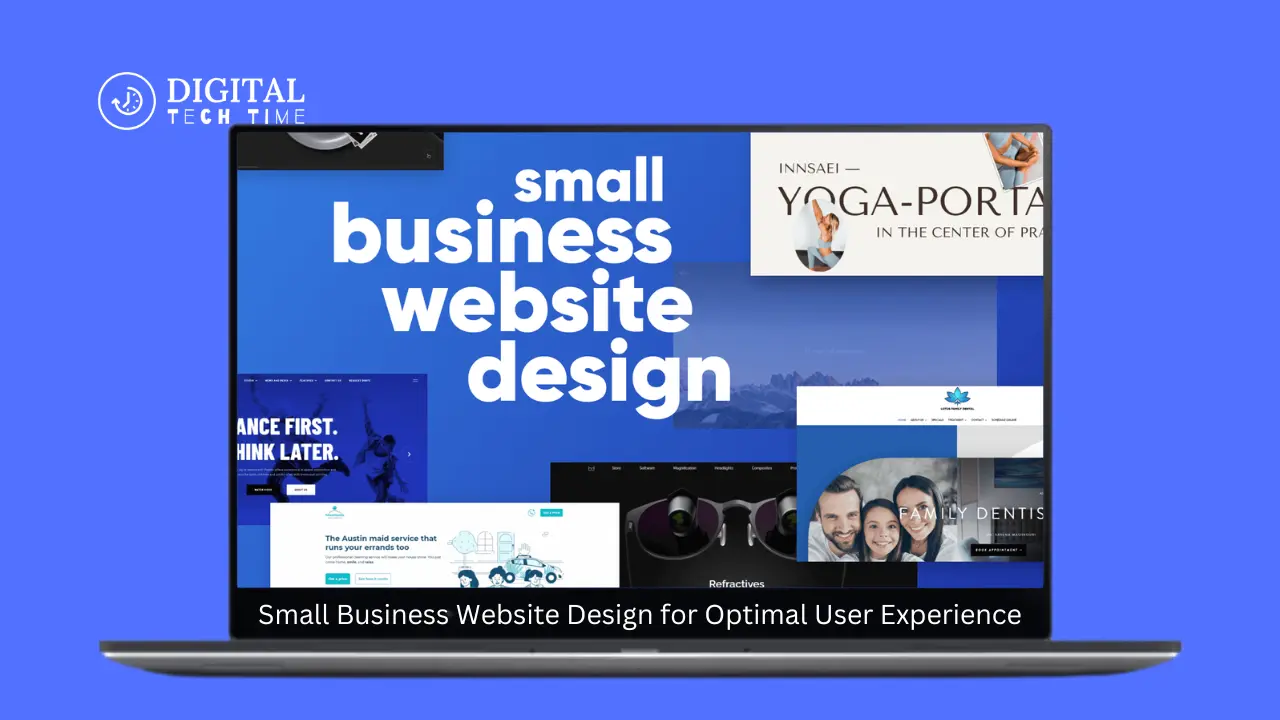Small Business Website Design for Optimal User Experience
In today’s digital age, a well-designed website is crucial for any business aiming to thrive and stand out. Your website is often the first interaction potential customers have with your brand, making it essential to create a positive and lasting impression. This guide will provide comprehensive insights into effective business website design, helping you create a site that looks great and functions efficiently to meet your audience’s needs.
Table of Contents
Why Business Website Design Matters
A well-crafted business website is more than just an online brochure. It serves as the heart of your online presence, reflecting your brand’s identity and values while providing a seamless user experience. Here’s why investing in business website design is essential:
First Impressions: Your website is often the first point of contact between you and potential customers. A professional, user-friendly design can build trust and credibility.
User Experience (UX): A well-designed website ensures visitors can easily navigate and find the information they need, enhancing their overall experience.
SEO and Visibility: Optimized design elements contribute to better search engine rankings, making it easier for potential customers to find you online.
Conversion Rates: An effective design guides users through the customer journey, encouraging actions such as purchasing or filling out a contact form.
Also Read: Fix Storage Repairing SD Cards and USB Drives
Understanding Your Audience
Before diving into the specifics of business website design, it’s crucial to understand your audience. Tailoring your website to meet their needs will significantly enhance its effectiveness.

Research Your Audience
Start by gathering demographic information such as age, gender, location, and income level. Dive deeper into psychographics, including interests, values, and lifestyle. Use surveys, social media analytics, and customer interviews to gather these insights.
Identify User Needs
Understand what your visitors are looking for when they come to your site. Are they seeking information, products, or services? This understanding will guide your content and design decisions.
Analyze User Behavior
Utilize analytics tools to track how visitors interact with your site. Identify which pages they spend the most time on and where they drop off. This data is invaluable for making informed improvements.
Create User Personas
Develop fictional characters representing your ideal customers based on your research. These personas will help you visualize your audience and tailor your website’s design and content to meet their needs.
Essential Elements of Effective Business Website Design
Creating an effective business website involves focusing on key elements that enhance visual appeal and functionality. Here are the essential components to consider:

Navigation
Straightforward and Intuitive Navigation: Ensure users can find what they want with just a few clicks. Use a well-organized menu, a visible search bar, and a logical page hierarchy.
Content
Engaging and Relevant Content: Your content should address the needs of your audience. Use headings, subheadings, and bullet points to make the text easy to read. Incorporate keywords naturally to improve SEO.
Visual Design
Attractive Design: First impressions matter. Use consistent colors and fonts, optimize images and videos for quick loading, and ensure your site reflects your brand’s personality.
Mobile Responsiveness
Responsive Design: With the increasing use of smartphones, your site must perform well on all devices. A responsive design adapts to different screen sizes, ensuring a good user experience.
Loading Speed
Optimize Speed: Slow-loading pages can frustrate visitors. Optimize image sizes, leverage browser caching, and minimize heavy scripts to keep your site running smoothly.
Robust Security
Ensure Security: Protect your site with SSL certificates and other security measures to safeguard your data and build trust with your visitors.
SEO Integration
SEO Best Practices: Incorporate SEO strategies into your design, from using relevant keywords to optimizing site speed and mobile responsiveness. This will improve your search engine rankings and attract more traffic.
Also Read: How to Open MDF Files in Windows 10
User Experience (UX) Principles for Business Websites
Understanding and applying UX principles is crucial for creating a positive user experience. Here are some fundamental UX principles tailored for business websites:

Simplicity is Key
Keep It Simple: Users should be able to find information quickly without being overwhelmed by too many options or excessive design elements.
Consistency Throughout
Maintain Consistency: Use the same color scheme, font styles, and layout patterns across all pages. Consistency helps build brand recognition and makes navigation intuitive.
Accessibility for Everyone
Ensure Accessibility: Your website should be navigable via keyboard, use alt text for images, and choose colors with sufficient contrast to make your site accessible to everyone.
Feedback and Interaction
Provide Immediate Feedback: Show confirmation messages when users fill out forms or change the color of buttons when hovered over to enhance interactivity.
A/B Testing
Test and Iterate: Use A/B testing to compare different design elements and see which performs better regarding user engagement and conversion rates.
Practical Strategies for Enhancing Website Design and UX
Enhancing your website’s design and UX involves practical strategies that make your site more attractive and user-friendly. Here are some approaches to consider:
User Feedback
Collect User Feedback: Use surveys, feedback forms, and social media to gather insights from real users. Pay attention to common themes and issues to make targeted improvements.
Analytics
Leverage Analytics Tools: Use tools like Google Analytics to track user behavior, identify popular pages, and pinpoint areas for improvement.
SEO Best Practices
Implement SEO Strategies: Use relevant keywords, optimize site speed, and ensure mobile responsiveness to improve search engine rankings and attract more traffic.
Case Studies
The Local Café’s Digital Transformation
A small-town café saw a 150% increase in online orders after optimizing its website for mobile and simplifying navigation. High-quality images and a user-friendly layout captured the café’s charm online.
Boutique Fitness Studio Boosts Membership
A boutique fitness studio increased new memberships by 75% by featuring testimonials, before-and-after photos, and easy-to-use sign-up forms. This humanized their brand and improved user engagement.
Eco-Friendly Product Store Grows Online Sales
An eco-friendly product store doubled its organic search traffic and increased online sales by 200% after simplifying product pages, adding clear CTAs, and improving site speed.
Frequently Asked Questions
Q1: Why is business website design important?
A: Business website design is crucial because it creates the first impression for potential customers, enhances user experience, boosts SEO, and drives conversions.
Q2: How can I improve my website’s user experience?
A: Improve your website’s UX by ensuring simple navigation, maintaining design consistency, ensuring accessibility, providing immediate feedback, and continuously testing and iterating.
Q3: What are the essential elements of effective business website design?
A: Essential elements include straightforward navigation, engaging content, attractive visual design, mobile responsiveness, fast loading speed, robust security, and SEO integration.
Q4: How can user feedback help improve my website?
A: User feedback provides insights into real users’ experiences and can highlight common issues or areas for improvement, allowing you to make targeted changes.
Q5: What tools can help with business website design and UX?
A: Tools like WordPress, Google Analytics, Canva, Hotjar, and SEMrush can help enhance website design and UX improvement.
Conclusion
In conclusion, effective business website design is a blend of understanding your audience, focusing on key design elements, applying UX principles, and utilizing practical strategies. By implementing these approaches, you can create a website that attracts visitors, engages them, and drives conversions. Start making these changes today to see the positive impact on your business’s online presence. If you need expert support, consider contacting professional web designers or UX specialists to transform your site into a user-friendly, conversion-driving powerhouse.
For more information on enhancing your business website design, visit Google’s Web Fundamentals and WordPress’s Design Handbook.







